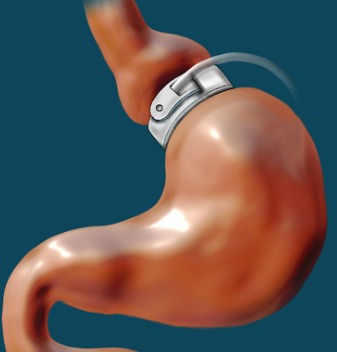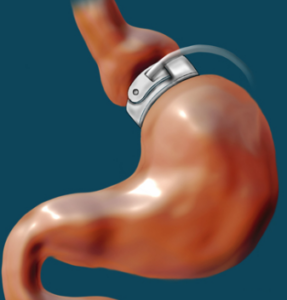
 In the ever-evolving battle with obesity, where diets often fail and surgeries are invasive, risky, and frequently ineffective, Virtual Gastric Hypnotherapy (VGH) is carving a new path. This groundbreaking approach harnesses the mind-body connection to simulate the positive effects of real-life surgery—without any of the risks.
In the ever-evolving battle with obesity, where diets often fail and surgeries are invasive, risky, and frequently ineffective, Virtual Gastric Hypnotherapy (VGH) is carving a new path. This groundbreaking approach harnesses the mind-body connection to simulate the positive effects of real-life surgery—without any of the risks.
What sets VGH apart is not just its non-invasive nature but its ability to empower individuals to redefine their relationship with food and nutrition. This article explores how this innovative technique works, why it’s gaining popularity, and what to expect on this transformative journey.
Science Behind VGH
At its core, VGH taps into the creativity of the subconscious mind, which governs habits, patterns, values, beliefs, and automatic responses. The subconscious doesn’t distinguish between vivid thoughts and reality, making it uniquely receptive to healthy suggestions. Hypnotherapists leverage this by planting suggestions that the subconscious accepts as truth.
In VGH, the suggestion is simple yet profound: a gastric band has been fitted around the stomach. This imagined band effectively reduces the stomach’s capacity, making clients feel full faster and with smaller portions. Unlike surgery, VGH avoids risks, recovery downtime, and physical side effects. Instead, it uses vivid imagery to inspire sustainable behavioral changes.
What to Expect
- Assessment and goal setting: The journey begins with understanding the client’s relationship with food. A certified hypnotherapist explores eating habits, emotional triggers, and weight loss goals to create a personalized plan. Whether addressing stress eating, portion control, or sugar cravings, the process is tailored to individual needs.
- Induction and relaxation: The practitioner guides the client into a state of deep meditative relaxation, where the mind becomes highly receptive to positive suggestions.
 Contrary to myths, hypnotherapy doesn’t mean losing control, it’s about regaining control from within.
Contrary to myths, hypnotherapy doesn’t mean losing control, it’s about regaining control from within.
- Guided imagery and virtual surgery: Clients are led through a vivid visualization of gastric band surgery, including arriving at the hospital, meeting the surgeon, and feeling the band being placed. For some, the experience feels remarkably real, though individual responses may vary.
- Post-surgery programming: After the imagined surgery, suggestions reinforce healthier habits, such as drinking water before meals, eating slowly, and stopping when comfortably satisfied. These cues help clients instinctively regulate their eating, fostering long-term change.
- Reinforcement: Clients are provided with digital recordings to reinforce positive changes at home. Weight loss is a journey, and repetition helps solidify newly preferred patterns, supporting lasting success.
Psychological Power of VGH
Unlike diets that rely on willpower, VGH operates on a subconscious level, rewriting deep-seated patterns around food. Emotional eating which is often triggered by stress, boredom, or past conditioning, is a significant barrier to weight loss. VGH addresses these triggers, fostering a calmer, more mindful approach to eating.
A key benefit of VGH is self-empowerment. Traditional diets often impose restrictive external rules, while VGH encourages clients to trust their instincts and listen to their bodies. This makes weight loss feel natural and sustainable.
 Why VGH Is Gaining Popularity
Why VGH Is Gaining Popularity
- Non-Invasive and risk-free: Unlike surgery, VGH involves no anesthesia, incisions, or post-operative risks. It’s entirely safe and suitable for most people.
- Cost-effective: Gastric band surgery can cost tens of thousands of dollars, while VGH is far more affordable and accessible.
- Holistic benefits: Beyond weight loss, clients report better sleep, reduced stress, and increased self-confidence. The relaxation during sessions also alleviates anxiety, improving overall well-being.
- No rebound effect: Many diets result in yo-yo weight changes when restrictions are lifted. VGH promotes sustainable lifestyle habits, reducing the risk of relapse.
Limitations of VGH
While VGH is highly effective, it’s not a magic solution. Success depends on the client’s commitment to adopting healthier habits and consistently using home reinforcement sessions. Results also vary based on factors like metabolism, stress levels, and underlying health conditions.
Also, choosing a qualified hypnotherapist is essential. Look for certifications from reputable organizations and read reviews to ensure you’re working with a skilled practitioner.
Future of Weight Loss
As obesity rates rise globally, innovative and sustainable solutions like VGH are becoming increasingly important. This method offers a glimpse into the future of weight management, where the mind becomes the most powerful tool for achieving a healthier body.
VGH goes beyond physical weight loss, addressing the psychological and emotional roots of overeating. By fostering lasting change, VGH represents a paradigm shift in how we approach weight management.
Is VGH Right for You?
If you’re tired of diets that fail and wary of invasive procedures, Virtual Gastric Hypnotherapy could be the solution you’ve been searching for. It’s safe, affordable, and holistic, offering more than just weight loss. It’s a journey toward greater self-awareness and empowerment.
Whether you aim to shed a few pounds or completely transform your relationship with food, VGH presents a compelling option. With the guidance of a skilled hypnotherapist and an open mind, you can take the first step toward a lighter, healthier you, one suggestion at a time.
by: Paul Gustafson

 As a clinical hypnotherapist for more than 20 years, I’ve had the privilege to guide many of my clients toward transformative breakthroughs. While many approach hypnotherapy for specific goals such as quitting smoking, managing weight, or reducing stress, it is the unexpected benefits that ripple out from their sessions that always surprise both clients and myself as well.
As a clinical hypnotherapist for more than 20 years, I’ve had the privilege to guide many of my clients toward transformative breakthroughs. While many approach hypnotherapy for specific goals such as quitting smoking, managing weight, or reducing stress, it is the unexpected benefits that ripple out from their sessions that always surprise both clients and myself as well.
These unintended, yet profoundly welcomed, shifts can include positive changes in emotional resilience, greater self-awareness, and even physical health in ways they may never have imagined.
In this article, I’ll explore some of these hidden benefits, drawing on two decades of practice to illuminate how hypnotherapy can be a catalyst for profound, life-enhancing changes.
Heightened Emotional Resilience
Perhaps, one of the least spoken-about advantages of hypnotherapy is emotional resiliency. Many times, clients seek relief from a certain stressor or anxiety and find themselves leaving with an even more fortified inner toughness. That is where hypnotherapy does its work: gently accessing the subconscious mind, home of deeply imbedded beliefs and emotional patterns.
Hypnotherapy can enhance structuring of limiting beliefs, allow unresolved emotions to surface and be explored, offering sense of greater control to one’s inner landscape. By embracing routine hypnotherapy or meditation one becomes more resilient toward life’s many challenges. An example is someone who initially came hypnotherapy sessions for chronic work-related stress finding themselves entering high-pressure situations with calming confidence after a few sessions.
Improved Sleep
While hypnotherapy does not always target sleep disorders, it generally helps a subject generally improve the quality of sleeping. Most sleep related disorders are related to stress, anxiety, and other overactive brain-related problems, in which hypnotherapy is quite effective in relieving.
stress, anxiety, and other overactive brain-related problems, in which hypnotherapy is quite effective in relieving.
Clients learn to quiet their minds and embrace a deeper sense of serenity through various relaxation and visualization techniques. Many find that the calming imagery from their sessions naturally replays in their minds as they drift off to sleep. This enhanced sense of well-being often leads to improved emotional and physical health, contributing to a better overall quality of life.
Enhanced Creativity and Problem-Solving
Creativity begins to flow when it disengages the conscious mind-to let the subconscious bring out those creative ideas and enhanced angles of perception. Hypnotherapy can be a useful tool fostering a client’s creative flow. Hypnotherapy routinely bypasses the analytical mind freeing up innovative thinking and fresh insight.
Past clients who happen to also be musicians, artists, and writers routinely report an enhanced creative flow because of their hypnotherapy experience. I would say that most clients experience unexpected freedom, clarity or relief unrelated to what they specifically came to fix with hypnotherapy.
Improved Physical Health
The impact of hypnotherapy on physical health often surprises clients. It certainly doesn’t replace medical care, but hypnotherapy compliments and often enhances conventional treatments through the decrease of stress and fostering of relaxation that is so important in general well-being.
Hypnotherapy can reduce the stressful anticipation of physical problems like discomfort in most instances which enhances personal control. Others have related the following: a decrease in blood pressure, improvement in digestion, and even quick recuperation from illness or injury once hypnotherapy enters their self-care routine.
Better Relationships
 Indirectly, hypnotherapy can enhance personal relationships. It can soften self-limiting beliefs, emotional triggers, and offer improved perspective with unresolved conflicts, offering more clarity and compassion.
Indirectly, hypnotherapy can enhance personal relationships. It can soften self-limiting beliefs, emotional triggers, and offer improved perspective with unresolved conflicts, offering more clarity and compassion.
For instance, one client who couldn’t communicate well with his wife found out through hypnosis that as a child he had grown up feeling nobody listened to him. As he changed that pattern, he changed not only his inner talk but also how he related to his spouse.
Realizing Hidden Talents and Desires
Hypnotherapy has the capacity to unlock areas a person may never have known or had forgotten existed. Hidden in the subconscious, deeper inside, lie the evolvement of hidden talents, desires, or dreams buried by routine and responsibility.
For one client, a middle-aged accountant, in this practice of visualization, he rediscovered the long-forgotten love of music; he started taking piano lessons and shortly thereafter, joined the local classic rock band, which unexpectedly improved his quality of life.
Increased Mindfulness
Hypnotherapy helps clients connect deeply with the present moment. They learn to observe their thoughts and feelings without judgment. This cultivated mindfulness often extends into their daily lives, enabling them to face challenges with greater confident clarity.
For instance, this very anxious client learned how to anchor back into peacefulness by rehearsing experiences taken from their sessions. It wasn’t just the anxiety, which was significantly reduced, but also a new opened up leading to more consistent awareness and appreciation.
 Confident Clarity
Confident Clarity
Hypnotherapy embraces self-trust and confidence resulting in enhanced intuition and inner wisdom. An example is one client who had great difficulty making a career change decision for quite a long period of time.
Through hypnotherapy she started to hear that little voice within pointing in a specific direction filled with passion. In fact, the same client still views those sessions as a turning point for starting a fulfilling new chapter in her life.
Increased Productivity
The last advantage of hypnotherapy is that, often, it allows people to start more productively work in the direction of their goal. The path seems more direct, and the outcome seems much more attainable. Routinely exploring the subconscious mind often leads to a more purposeful and enriching life because therein lies the true wish of the heart.
One retiree, through hypnotherapy, relived his dream of serving overseas. It not only gave him the opportunity to experience his desire for a new adventure but also lifted his spirits and sense of purpose again.
Conclusion
Hypnotherapy is so much more than a means to fix a particular problem; it’s a gateway to self-discovery and change. Unexpected benefits ranging from improved creativity to better relationships prove just how interconnected our minds, bodies, and feelings truly are.
After all these years I am still impressed by the capacity we all have for growth and self-healing. The real magic of hypnotherapy is how it can offer specific relief, but how it can also open doors toward a more meaningful life. If you ever wondered what hypnotherapy can do for you, consider the unexpected-it just could hold the key to unlock your hidden potential.
by: Paul Gustafson CH RN


 Hypnosis has long been used to treat and manage a host of psychiatric and neurologic symptoms. However, not all patients respond equally to this therapy type. About two thirds of the general adult population are estimated to be at least somewhat hypnotizable, and 15% are highly hypnotizable.
Hypnosis has long been used to treat and manage a host of psychiatric and neurologic symptoms. However, not all patients respond equally to this therapy type. About two thirds of the general adult population are estimated to be at least somewhat hypnotizable, and 15% are highly hypnotizable.
Through brain imaging, the Stanford team found that high hypnotizability is associated with greater functional connectivity between the left dorsolateral prefrontal cortex (DLPFC) and the dorsal anterior cingulate cortex.
“A novel aspect of this trial is that we used the person’s own brain networks, based on brain imaging, to target the right spot,” Co-senior author Nolan Williams, MD, with Stanford University, California, said in a news release.
The team chose patients with chronic pain because hypnosis has been shown to be a “highly effective analgesic that has a far better risk/benefit ratio than widely overutilized opioids that have serious fatal overdose potential,” Spiegel told Medscape Medical News.
The pre-to-post SHIFT change in hypnotic induction profile scores, a standardized measure of hypnotizability, was significantly greater in the active vs sham group after just 92 seconds of stimulation (P = .046).
Only the active SHIFT group showed a significant increase in hypnotizability following stimulation, an effect that lasted for about 1 hour.
“Increasing hypnotizability in people who are low-to-medium hypnotizable individuals could improve both the efficacy and effectiveness of therapeutic hypnosis as a clinical intervention,” the researchers wrote.
They note that because this was a “mechanistic study,” it did not explore the impact of increased hypnotizability on disease symptoms. They also note that further studies are needed to assess the dose-response relationships of SHIFT.

Transformative Research
“This line of research is fascinating,” Shaheen Lakhan, MD, PhD, neurologist, and researcher in Boston, told Medscape Medical News.
“We are nearing an era of personalized, noninvasive brain modulation. The ability to individually modulate the DLPFC opens new possibilities for brain health beyond hypnotizability for fibromyalgia,” said Lakhan, who wasn’t involved in the study.
“The DLPFC is involved in executive functions (and disorders) like attention (ADHD), emotional regulation (depression), motivation (schizophrenia), and impulse control (addiction),” he noted.
“Soon we may no longer need large expensive devices like transcranial magnetic stimulators as in this research study. Smartphones could deliver tailored digital therapeutics by engaging specific brain circuits,” Lakhan predicted.
“Imagine using an app to receive treatment customized to your unique brain and needs — all without anything implanted and delivered anywhere. The potential to precisely modulate the brain’s wiring to enhance cognition and mental health, without surgery or physical constraints, is incredibly promising. The possibilities are intriguing and could truly transform how we address brain diseases,” he added.
The study was supported by a grant from the National Center for Complementary and Integrative Health (NCCIH), part of the National Institutes of Health (NIH). Williams is a named inventor on Stanford-owned intellectual property relating to accelerated TMS pulse pattern sequences and neuroimaging-based TMS targeting; has served on scientific advisory boards for Otsuka, NeuraWell, Magnus Medical, and Nooma as a paid advisor; and holds equity/stock options in Magnus Medical, NeuraWell, and Nooma. Spiegel is a cofounder of Reveri Health, Inc., an interactive hypnosis app (not utilized in the current study).

Introduction:
Hypnotherapy, a powerful and often misunderstood therapeutic technique, has been gaining recognition for its efficacy in addressing many common problems such as stress, fear, smoking, obesity, pain, IBS, insomnia, and substance abuse. This article delves into this fascinating modality, unraveling its mysteries and shedding light on its profound impact on the human mind.
The Basics of Hypnotherapy:
At its core, hypnotherapy involves inducing a state of deep physical relaxation, focused attention along with heightened suggestibility. Contrary to common misconceptions, it is not a form of mind control, but rather a collaborative process between practitioner and the client. A hypnotherapist guides the client into a more receptive level of thought and then offers positive suggestions supporting healthy change.
Understanding the Hypnotic Trance:
Think of hypnotherapy as goal-oriented meditation. With simple direction and creative scenarios clients are comfortably guided into a deep daydream state, which is something we all routinely experience in the form of ‘zoning out’ or becoming momentarily ‘lost in our thoughts’. Another example is the phenomenon referred to as ‘highway hypnosis’ when, on long drives, we can slide into that daydream state and reach our destination with no clear memory of the journey.
These are common, everyday examples of when the subconscious mind is more open and active. It’s also important to understand that we as humans can shift from one level of awareness to another. Hypnosis is a language tool enabling this therapeutic transition.
Benefit of Accessing Subconscious Thought:
This is why hypnotherapy is such a powerful tool. Think of the subconscious as the hard drive; the home of all habits, memories, emotions, values and beliefs that shape the routine patterns of our daily lives. If we routinely repeat any pattern of action, thought, or emotion, and its repeated long enough, it becomes rooted in the subconscious mind for better or worse.
In life, it’s all about our routine pattern of thought, how we think and what we most routinely think about that dictates our life experience; how we feel, how we appear, and how we respond to the world around us.
It’s also important to know that the subconscious doesn’t care if the pattern is good or bad; healthy or not. It also doesn’t matter what we intellectually or consciously may prefer. Once problem patterns are rooted, they can feel automatic. Smokers know that smoking is a potentially  deadly habit, and they are also certainly aware of the cost. Along with the addictive qualities of nicotine, the repetitive, ritualistic pattern of smoking reinforces the habit to continue, despite what we might consciously prefer.
deadly habit, and they are also certainly aware of the cost. Along with the addictive qualities of nicotine, the repetitive, ritualistic pattern of smoking reinforces the habit to continue, despite what we might consciously prefer.
Another example of a pattern problem is dieting. There is a good reason why there are dozens of diets to choose from, dieting doesn’t work. Slick, manipulative advertising promises rapid results often involving extreme restrictions or unsustainable practices, leading to short-term weight loss followed by rebound weight gain when normal eating resumes. UCLA posted this study: in less than two years, 23% of dieters gained back more weight than they lost. In more than two years that percentage rose to 83%.
The dieting concept implies a temporary, conscious level change with eating habit patterns which reside on a much deeper, subconscious, level. It’s not a pound problem, it’s a pattern problem. Dieting is like weeding your garden by only clipping them off at the ground level. It looks great for a while, but the problem always returns.
For lasting results, it’s crucial to adopt a more permanent and balanced lifestyle, focusing on nourishing the body rather than just restricting calories. Desperate overweight individuals continue searching for an answer that is not readily available.
With hypnotherapy, we can create an emotional disconnect from the problem pattern and plant seeds supporting healthy change. Clients then take the same approach to establish sustainable relief as they previously took to secure the problem, repetition.
My clients have easy access to mp3 recordings of their sessions via Dropbox and listen daily for a minimum of 3 months. Without repetition the office session is like a massage; it feels good in the moment but it’s always back to business as usual.
A great longevity study confirmed that 71% of patients with irritable bowel syndrome, who listened daily to home recordings of IBS specific hypnosis sessions for 3 months were still symptom-free after 5 years. (Gonsalkorale WM 2003)
hypnosis sessions for 3 months were still symptom-free after 5 years. (Gonsalkorale WM 2003)
Just follow the feeling. The advantage hypnotherapy has over other options is that it feels wonderful. When that feel-good connection is made on the initial visit, clients never see listening to home sessions as a chore.
Applications of Hypnotherapy:
Hypnotherapy has proven to be effective in treating a wide range of conditions. These include, but are not limited to:
- Anxiety and Stress Management: Hypnotherapy helps individuals achieve deep relaxation, alleviating anxiety and stress by reprogramming negative thought patterns.
- Smoking Cessation: By targeting the subconscious mind’s associations with smoking, hypnotherapy aids in breaking the habit and promoting a smoke-free lifestyle.
- Weight Loss: Addressing the root causes of unhealthy eating habits, hypnotherapy supports individuals in adopting positive behaviors for sustainable weight loss.
- Pain Management: Chronic pain sufferers can benefit from hypnotherapy as it helps modulate the perception of pain and promotes relaxation, reducing reliance on medication.
- Phobias and Fears: Hypnotherapy assists in uncovering the origins of phobias and fears, facilitating their resolution through targeted suggestions.
- Substance abuse: Hypnotherapy can initiate a sense of euphoria which clients can enjoy daily. With repetition, this new experience can become a preferred alternative to drugs and/or alcohol.
The Therapeutic Process:
In my practice, the initial visit involves a discussion of the client’s goals and concerns, followed by a review of how/why hypnotherapy can help. Then I teach clients how to listen to a session properly, and what to experience in terms of physical sensations such as warmth, tingling, weightlessness or feeling peacefully heavy.
I also review the potential of unique visual imagery such as colors or unexpected imaginative scenarios and how personal experiences with hypnotherapy can vary from day to day. It’s best to allow each session to be uniquely right for you that moment in time.
Prior to conducting the hypnotherapy session, I also teach my clients how to do self-hypnosis. This is a simple technique that empowers individuals to access meditative relaxation on their own which only takes about 10 minutes.
 With self-hypnosis the client is in a light meditative trance which makes it so easy to then transition into the hypnotherapy session. Most clients have no previous experience with hypnotherapy and this approach makes it so much easier for anyone to get into the flow of the process on the first visit.
With self-hypnosis the client is in a light meditative trance which makes it so easy to then transition into the hypnotherapy session. Most clients have no previous experience with hypnotherapy and this approach makes it so much easier for anyone to get into the flow of the process on the first visit.
Once the session begins, I help clients into deeper mediative relaxation and then guide them through creative scenarios supporting specific goals. This is very much a collaborative process where clients are actively participating in their own healthy transformation.
Ethical Considerations:
This empowering modality is rapidly becoming more widely embraced thanks in part to the many meditation apps readily available to anyone searching for healthy relief. However, there is still a long way to go.
At the time of this writing there are thirty states offering specific standards of practice for hypnotherapy [more]. Fifteen states defer to the guidelines presented by the National Guild of Hypnotists and the remaining states currently have no formal recommendations.
Conclusion:
Hypnotherapy, once relegated to the realm of mysticism, is now experiencing growing recognition as a legitimate and effective therapeutic modality. As our understanding of the mind continues to evolve, hypnotherapy stands as a beacon of hope for those seeking positive and lasting changes in their lives. The key lies in unlocking the potential of the subconscious mind, harnessing its power for personal transformation and self-healing.
by: Paul Gustafson RN CH

 In the ever-evolving battle with obesity, where diets often fail and surgeries are invasive, risky, and frequently ineffective, Virtual Gastric Hypnotherapy (VGH) is carving a new path. This groundbreaking approach harnesses the mind-body connection to simulate the positive effects of real-life surgery—without any of the risks.
In the ever-evolving battle with obesity, where diets often fail and surgeries are invasive, risky, and frequently ineffective, Virtual Gastric Hypnotherapy (VGH) is carving a new path. This groundbreaking approach harnesses the mind-body connection to simulate the positive effects of real-life surgery—without any of the risks. Contrary to myths, hypnotherapy doesn’t mean losing control, it’s about regaining control from within.
Contrary to myths, hypnotherapy doesn’t mean losing control, it’s about regaining control from within. Why VGH Is Gaining Popularity
Why VGH Is Gaining Popularity

 As a clinical hypnotherapist for more than 20 years, I’ve had the privilege to guide many of my clients toward transformative breakthroughs. While many approach hypnotherapy for specific goals such as quitting smoking, managing weight, or reducing stress, it is the unexpected benefits that ripple out from their sessions that always surprise both clients and myself as well.
As a clinical hypnotherapist for more than 20 years, I’ve had the privilege to guide many of my clients toward transformative breakthroughs. While many approach hypnotherapy for specific goals such as quitting smoking, managing weight, or reducing stress, it is the unexpected benefits that ripple out from their sessions that always surprise both clients and myself as well. stress, anxiety, and other overactive brain-related problems, in which hypnotherapy is quite effective in relieving.
stress, anxiety, and other overactive brain-related problems, in which hypnotherapy is quite effective in relieving. Indirectly, hypnotherapy can enhance personal relationships. It can soften self-limiting beliefs, emotional triggers, and offer improved perspective with unresolved conflicts, offering more clarity and compassion.
Indirectly, hypnotherapy can enhance personal relationships. It can soften self-limiting beliefs, emotional triggers, and offer improved perspective with unresolved conflicts, offering more clarity and compassion. Confident Clarity
Confident Clarity

 Hypnosis has long been used to treat and manage a host of psychiatric and neurologic symptoms. However, not all patients respond equally to this therapy type. About two thirds of the general adult population are estimated to be at least somewhat hypnotizable, and 15% are highly hypnotizable.
Hypnosis has long been used to treat and manage a host of psychiatric and neurologic symptoms. However, not all patients respond equally to this therapy type. About two thirds of the general adult population are estimated to be at least somewhat hypnotizable, and 15% are highly hypnotizable.


 deadly habit, and they are also certainly aware of the cost. Along with the addictive qualities of nicotine, the repetitive, ritualistic pattern of smoking reinforces the habit to continue, despite what we might consciously prefer.
deadly habit, and they are also certainly aware of the cost. Along with the addictive qualities of nicotine, the repetitive, ritualistic pattern of smoking reinforces the habit to continue, despite what we might consciously prefer. hypnosis sessions for 3 months were still symptom-free after 5 years. (Gonsalkorale WM 2003)
hypnosis sessions for 3 months were still symptom-free after 5 years. (Gonsalkorale WM 2003) With self-hypnosis the client is in a light meditative trance which makes it so easy to then transition into the hypnotherapy session. Most clients have no previous experience with hypnotherapy and this approach makes it so much easier for anyone to get into the flow of the process on the first visit.
With self-hypnosis the client is in a light meditative trance which makes it so easy to then transition into the hypnotherapy session. Most clients have no previous experience with hypnotherapy and this approach makes it so much easier for anyone to get into the flow of the process on the first visit.







